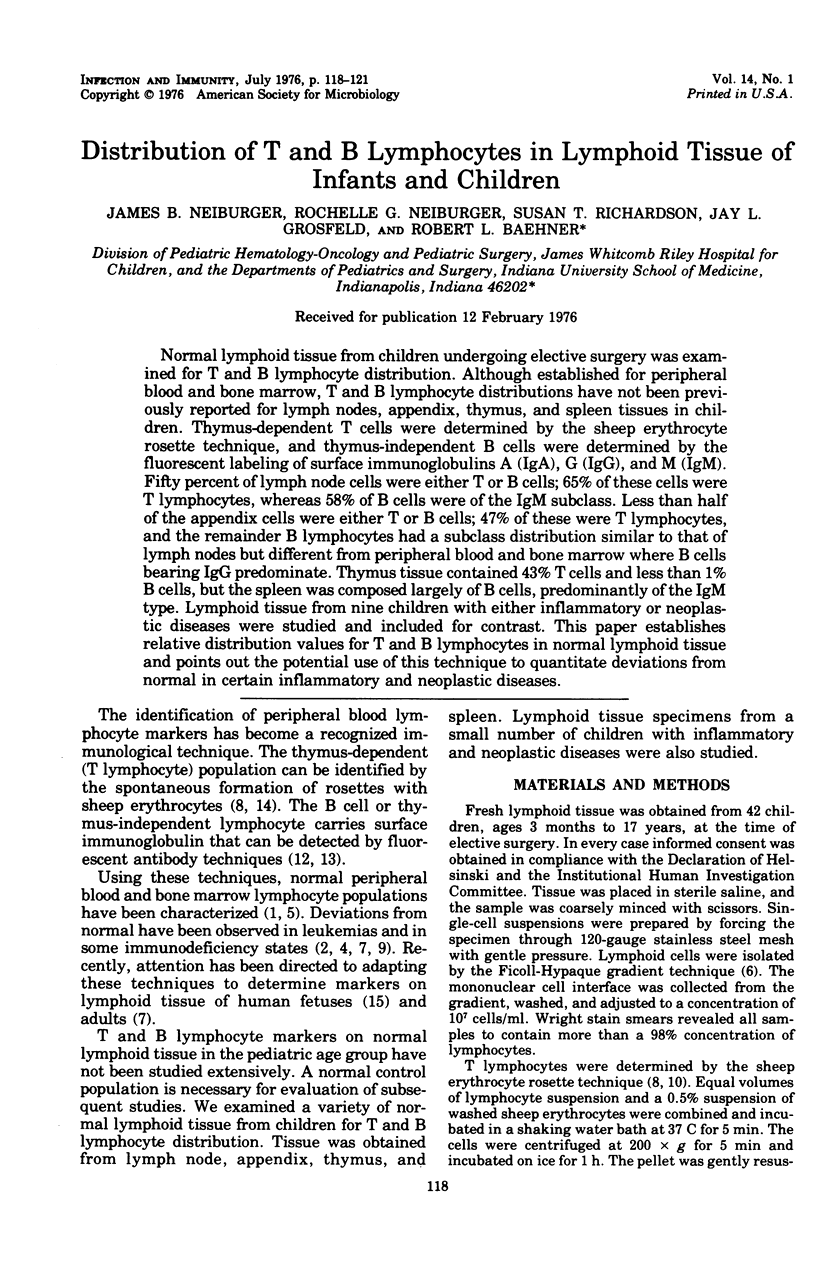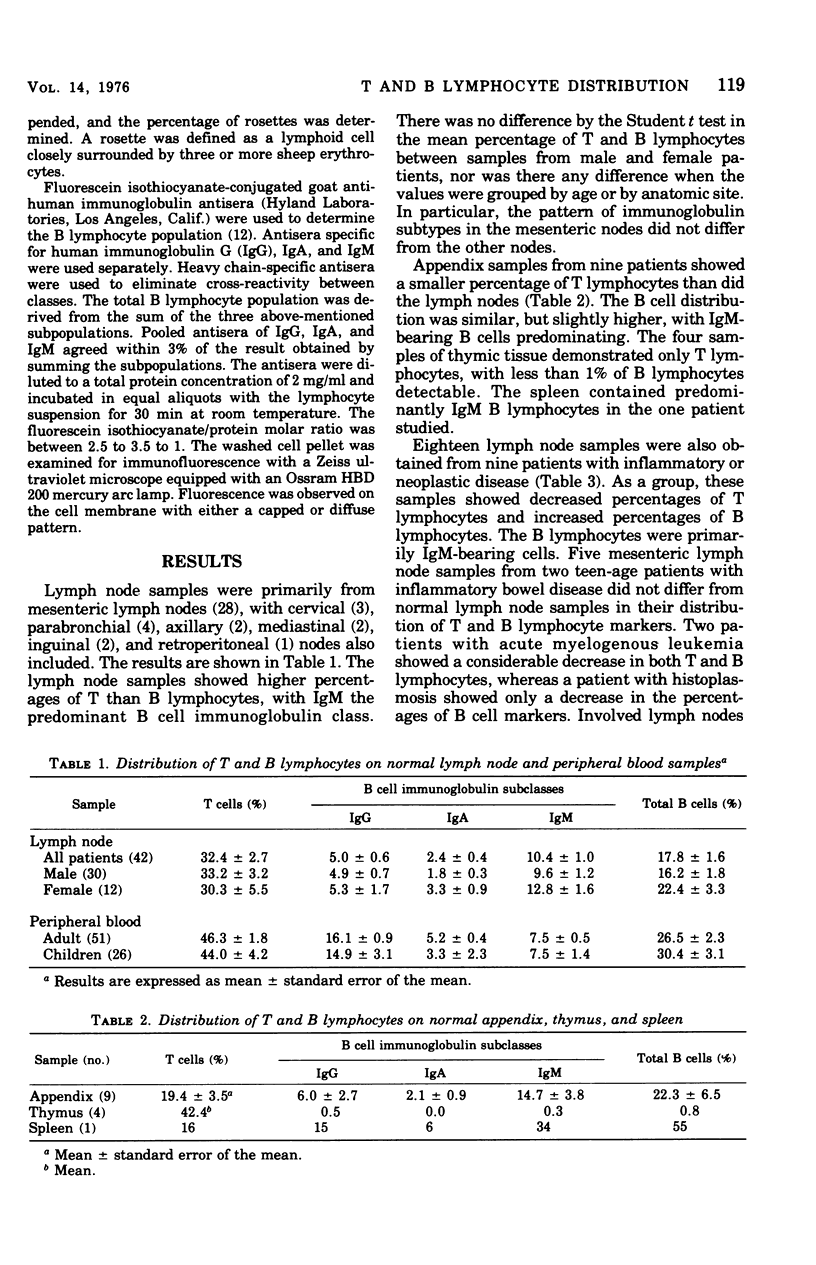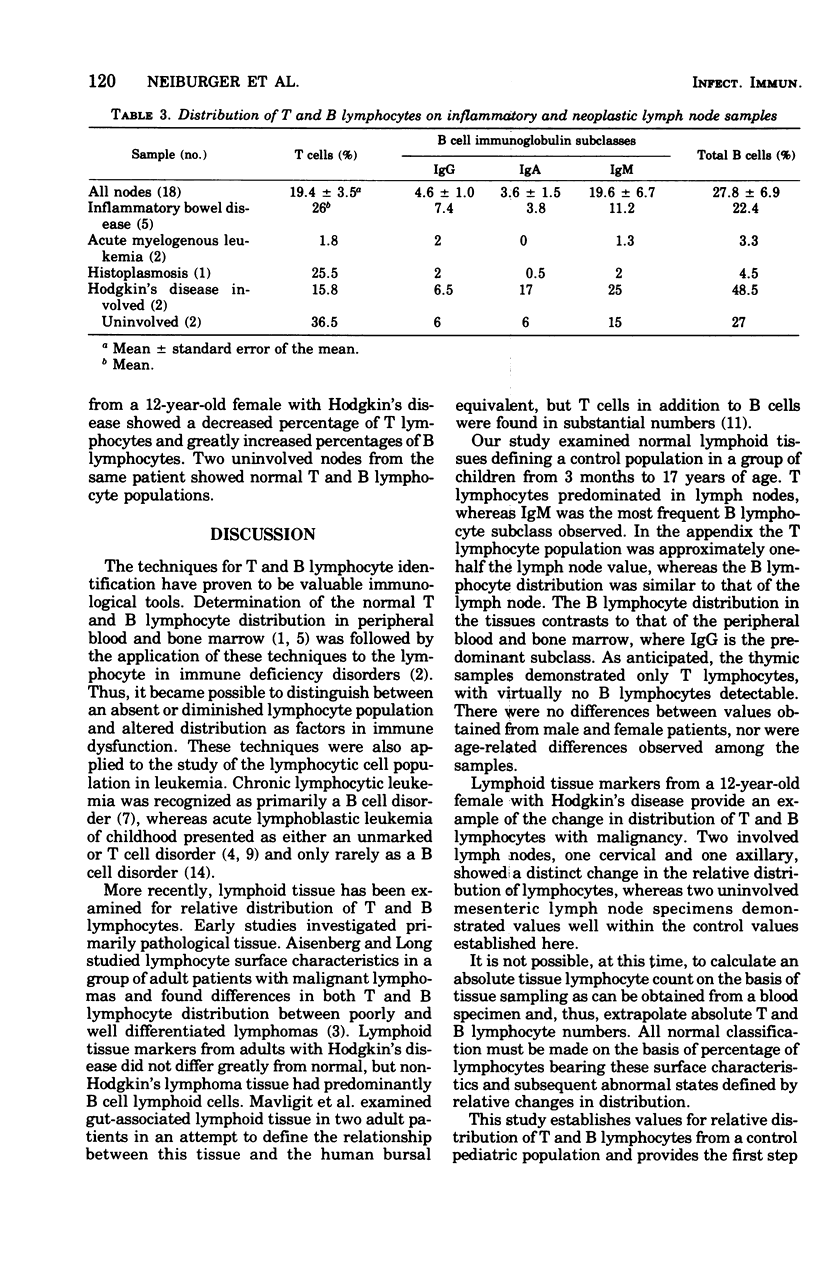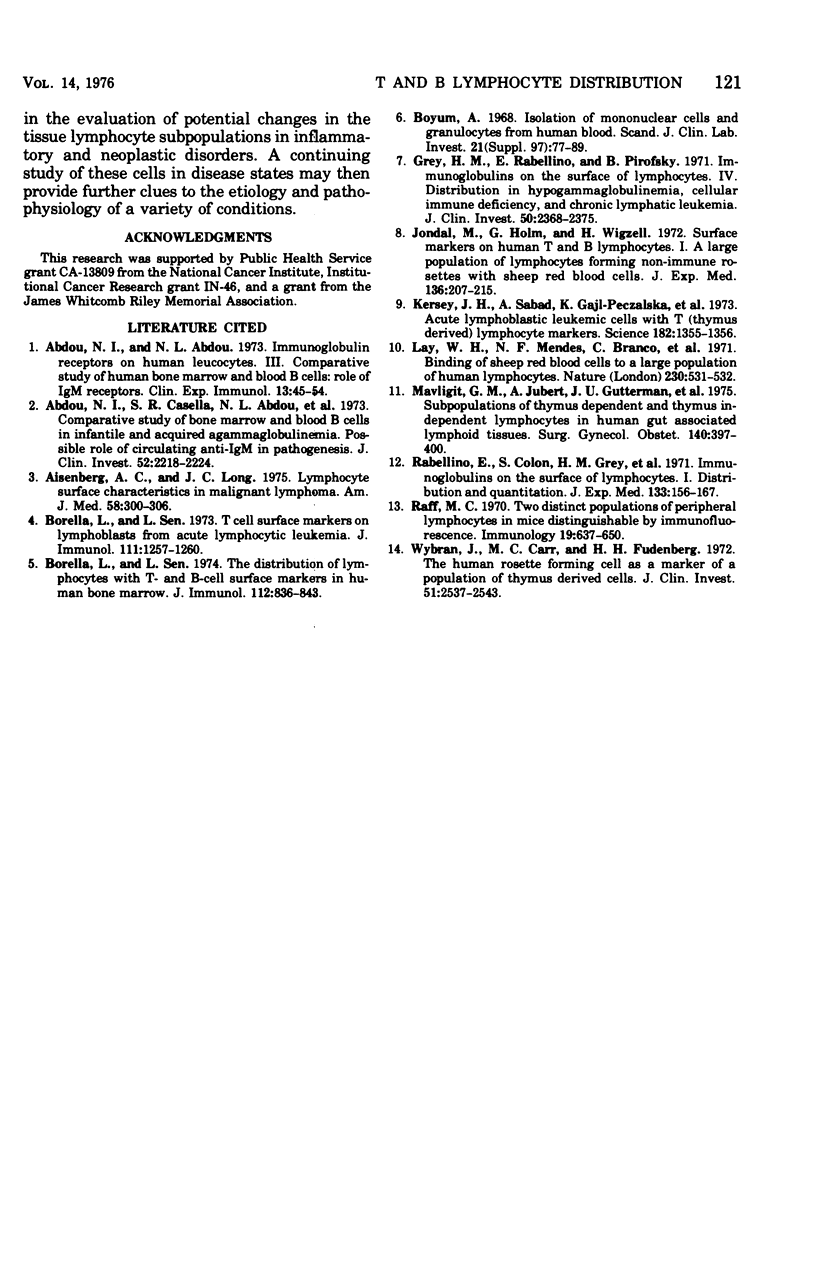Abstract
Normal lymphoid tissue from children undergoing elective surgery was examined for T and B lymphocyte distribution. Although established for peripheral blood and bone marrow, T and B lymphocyte distributions have not been previously reported for lymph nodes, appendix, thymus, and spleen tissues in children. Thymus-dependent T cells were determined by the sheep erythrocyte rosette technique, and thymus-independent B cells were determined by the fluorescent labeling of surface immunoglobulins A (IgA), G (IgG), and M (IgM). Fifty percent of lymph node cells were either T or B cells; 65% of these cells were T lymphocytes, whereas 58% of B cells were of the IgM subclass. Less than half of the appendix cells were either T or B cells; 47% of these were T lymphocytes, and the remainder B lymphocytes had subclass distribution similar to that of lymph nodes but different from peripheral blood and bone marrow where B cells bearing IgG predominate. Thymus tissue contained 43% T cells and less than 1% B cells, but the spleen was composed largely of B cells, predominantly of the IgM type. Lymphoid tissue from nine children with either inflammatory or neoplastic diseases were studied and included for contrast. This paper establishes relative distribution values for T and B lymphocytes in normal lymphoid tissue and points out the potential use of this technique to quantitate deviations from normal in certain inflammatory and neoplastic diseases.
Full text
PDF



Selected References
These references are in PubMed. This may not be the complete list of references from this article.
- Abdou N. I., Abdou N. L. Immunoglobulin receptors on human leucocytes. 3. Comparative study of human bone marrow and blood B cells: role of IgM receptors. Clin Exp Immunol. 1973 Jan;13(1):45–54. [PMC free article] [PubMed] [Google Scholar]
- Abdou N. I., Casella S. R., Abdou N. L., Abrahamsohn I. A. Comparative study of bone marrow and blood B cells in infantile and acquired agammaglobulinemia. Possible role of circulating anti-IgM in pathogenesis. J Clin Invest. 1973 Sep;52(9):2218–2224. doi: 10.1172/JCI107407. [DOI] [PMC free article] [PubMed] [Google Scholar]
- Aisenberg A. C., Long J. C. Lymphocyte surface characteristics in malignant lymphoma. Am J Med. 1975 Mar;58(3):300–306. doi: 10.1016/0002-9343(75)90595-1. [DOI] [PubMed] [Google Scholar]
- Borella L., Sen L. T cell surface markers on lymphoblasts from acute lymphocytic leukemia. J Immunol. 1973 Oct;111(4):1257–1260. [PubMed] [Google Scholar]
- Borella L., Sen L. The distribution of lymphocytes with T- and B-cell surface markers in human bone marrow. J Immunol. 1974 Feb;112(2):836–843. [PubMed] [Google Scholar]
- Böyum A. Isolation of mononuclear cells and granulocytes from human blood. Isolation of monuclear cells by one centrifugation, and of granulocytes by combining centrifugation and sedimentation at 1 g. Scand J Clin Lab Invest Suppl. 1968;97:77–89. [PubMed] [Google Scholar]
- Grey H. M., Rabellino E., Pirofsky B. Immunoglobulins on the surface of lymphocytes. IV. Distribution in hypogammaglobulinemia, cellular immune deficiency, and chronic lymphatic leukemia. J Clin Invest. 1971 Nov;50(11):2368–2375. doi: 10.1172/JCI106735. [DOI] [PMC free article] [PubMed] [Google Scholar]
- Jondal M., Holm G., Wigzell H. Surface markers on human T and B lymphocytes. I. A large population of lymphocytes forming nonimmune rosettes with sheep red blood cells. J Exp Med. 1972 Aug 1;136(2):207–215. doi: 10.1084/jem.136.2.207. [DOI] [PMC free article] [PubMed] [Google Scholar]
- Kersey J. H., Sabad A., Gajl-Peczalska K., Hallgren H. M., Yunis E. J., Nesbit M. E. Acute lymphoblastic leukemic cells with T (thymus-derived) lymphocyte markers. Science. 1973 Dec 28;182(4119):1355–1356. doi: 10.1126/science.182.4119.1355. [DOI] [PubMed] [Google Scholar]
- Lay W. H., Mendes N. F., Bianco C., Nussenzweig V. Binding of sheep red blood cells to a large population of human lymphocytes. Nature. 1971 Apr 23;230(5295):531–532. doi: 10.1038/230531a0. [DOI] [PubMed] [Google Scholar]
- Mavligit G. M., Jubert A., Gutterman J. U., Reed R. C., Hersh E. M. Subpopulations of thymus dependent and thymus independent lymphocytes in human gut associated lymphoid tissues. Surg Gynecol Obstet. 1975 Mar;140(3):397–400. [PubMed] [Google Scholar]
- Rabellino E., Colon S., Grey H. M., Unanue E. R. Immunoglobulins on the surface of lymphocytes. I. Distribution and quantitation. J Exp Med. 1971 Jan 1;133(1):156–167. doi: 10.1084/jem.133.1.156. [DOI] [PMC free article] [PubMed] [Google Scholar]
- Raff M. C. Two distinct populations of peripheral lymphocytes in mice distinguishable by immunofluorescence. Immunology. 1970 Oct;19(4):637–650. [PMC free article] [PubMed] [Google Scholar]
- Wybran J., Carr M. C., Fudenberg H. H. The human rosette-forming cell as a marker of a population of thymus-derived cells. J Clin Invest. 1972 Oct;51(10):2537–2543. doi: 10.1172/JCI107069. [DOI] [PMC free article] [PubMed] [Google Scholar]


